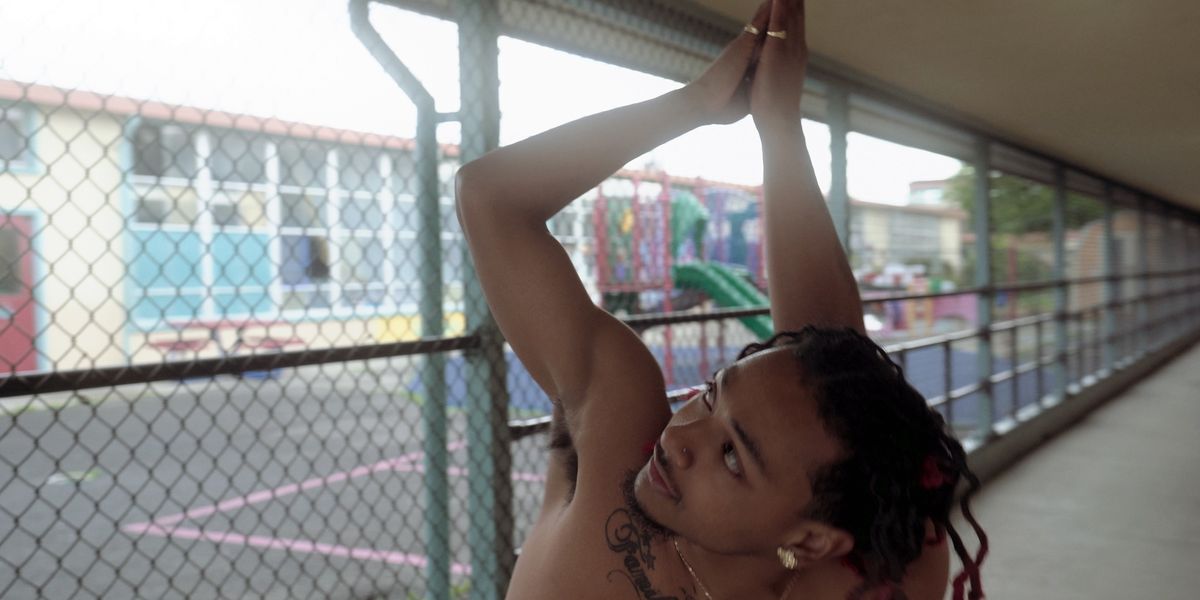What It's Like Dancing in Music Videos, Commercials—and on the Train
When Yung Phil and his crew Turf Feinz hop on the train to dance in exchange for donations, it’s likely that most passengers underestimate the artists in front of them. Few realize they’re watching a live performance by professionals.
A new short film, Turf Nation by director Jun Bae, explores that dichotomy by chronicling Turf Feinz as they work the crowds on BART trains in the San Francisco Bay Area, and talk about how they use BART performances as a way to get by between gigs like music videos, concerts, tours and commercials.
Before the film’s screening at the Cinequest Film & Creativity Festival this month, Dance Magazine spoke with one of the featured dancers, Yung Phil, about what it’s like to shuffle between film sets and train cars.
How he got into turfing
Turfing
is a dance style from Oakland that emerged a couple decades ago, incorporating elements of popping, bone-breaking and tutting with graceful footwork. When a friend showed Yung Phil some YouTube videos of local dancers performing it about 12 years ago, he quickly got hooked. “I saw it and was like, ‘Yo, that’s crazy. I gotta learn how to do that,’ ” he says.
He trained by watching as many videos as he could, and finding mentors nearby. “I used to literally go outside and just see people dancing like that,” he says.
What it’s like balancing two very different lifestyles
Yung Phil says the Turf Feinz perform on the train to earn money between gigs—and simply to keep dancing.
“We’re using this as another outlet,” he says. “It’s not just about trying to get a quick dollar. We try to push the movement, we try to push the culture forward.”
Although he says going from filming a commercial for Beats by Dre or a music video for Kehlani to performing on the train is “humbling,” he loves those moments when they can get a whole car to applaud. Typically (in non-pandemic times) he and the Turf Feinz perform on BART for around nine hours a day, about five days a week. “It gives me a lot of endurance,” he says. “And it’s taught me people skills.”
He hopes that one day, he’ll no longer have to depend on BART. “The goal is to be able to travel and show my talent, ideally overseas.”
About those shoulder dislocations…
One of the most eye-catching elements of turfing is the bone-breaking movement where dancers twist their arms in what looks like a full circle. “So, the thing is, you actually do kind of pop it out the shoulder, but you don’t completely dislocate it to point where it’s just like hanging out,” explains Yung Phil. “It’s half illusion, so I might pop it out a little bit, but my hand will make a 360 turn.”
Still, stretching afterward is essential. “If you don’t stretch, then, yes, you will get shoulder pain.”
The legality of performing on the train
Although there are no official rules about dancing itself, BART doesn’t allow amplified sound, so the dancers’ boombox or speakers technically aren’t allowed. Most of the time though, Yung Phil says the police leave them alone. “Most of the police respect it so much,” he says. “And we’ve never hurt anybody. But sometimes you do get a certain police officer that’s like, ‘Nah, I can’t have this.’ ” They’ll get a warning, and move along.
Certain passengers do give them attitude—Yung Phil says he’s not sure whether that’s about the blurry legality, or if they just hate dancing. But one thing’s for certain: When he’s being filmed for a documentary like Turf Nation or other projects, the crowd perks up. “People react very differently when people holding big cameras hop on the train with us.”





